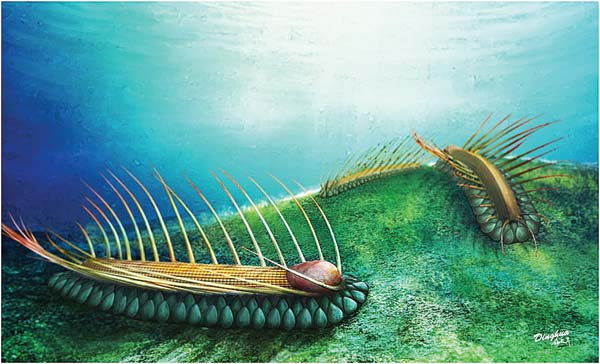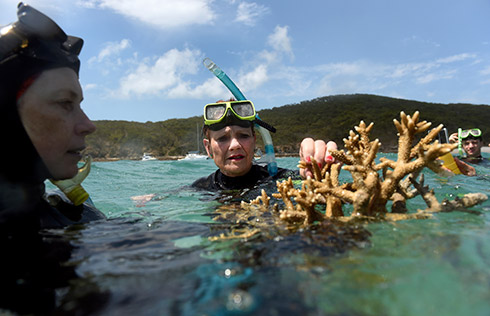'Strange beyond measure' sea creature unearthed in China
 |
|
An artist's impression of Orthrozanclus elongata. [Photo provided to chinadaily.com.cn] |
Archaeologists in China have discovered a fossilized sea creature that they describe as "strange beyond measure", with long spines along its worm-like body and a shell that covers its head, like a helmet.
The 515-million-year-old specimen was unearthed last year by a fossil collector in the hills of the Maotianshan Shales, an archaeological hotspot in Southwest China's Yunnan province.
The collector gave the fossil to Zhao Fangchen, a paleobiologist at the Chinese Academy of Sciences, who studied it, along with researchers from Durham University in the United Kingdom.
"The creature is like a mythical beast," Martin Smith, an assistant professor at Durham, told science news website Live Science.
He said researchers were surprised by the creature's unusual anatomy, which had "cocktail-stick-like spines that emerge from its sides" and a "head covered by a small shell, almost as if it's wearing a bike helmet".
"We don't know much about the animal underneath these mineralized plates – whether it had legs or a slug-like foot, and whether it had teeth or tentacles," Smith added.
He said the fossil is "incredibly rare" with only two specimens having been found among the tens of thousands of other creatures seen in the same deposits.
The 2-centimeter-long sea creature, whose scientific name is Orthrozanclus elongata, lived during the Cambrian period, a time before life had colonized dry land. Microscopic plants, microbial mats and invertebrates with exoskeletons, including trilobites and arthropods, were the dominant forms of marine life.
In the study of the creature published in the journal Scientific Reports, authors say Orthrozanclus elongata may provide clues about the evolution of mollusks. The creature, which appeared to be mobile, could be an ancestor to some of today's brachiopods, which live in shells and are largely sedentary.
"Whereas many lineages show evolutionary trends towards greater activity and complexity, brachiopods seem to have settled down to a sedentary existence, like a retiree settling down in a favorite armchair," Smith said.



























